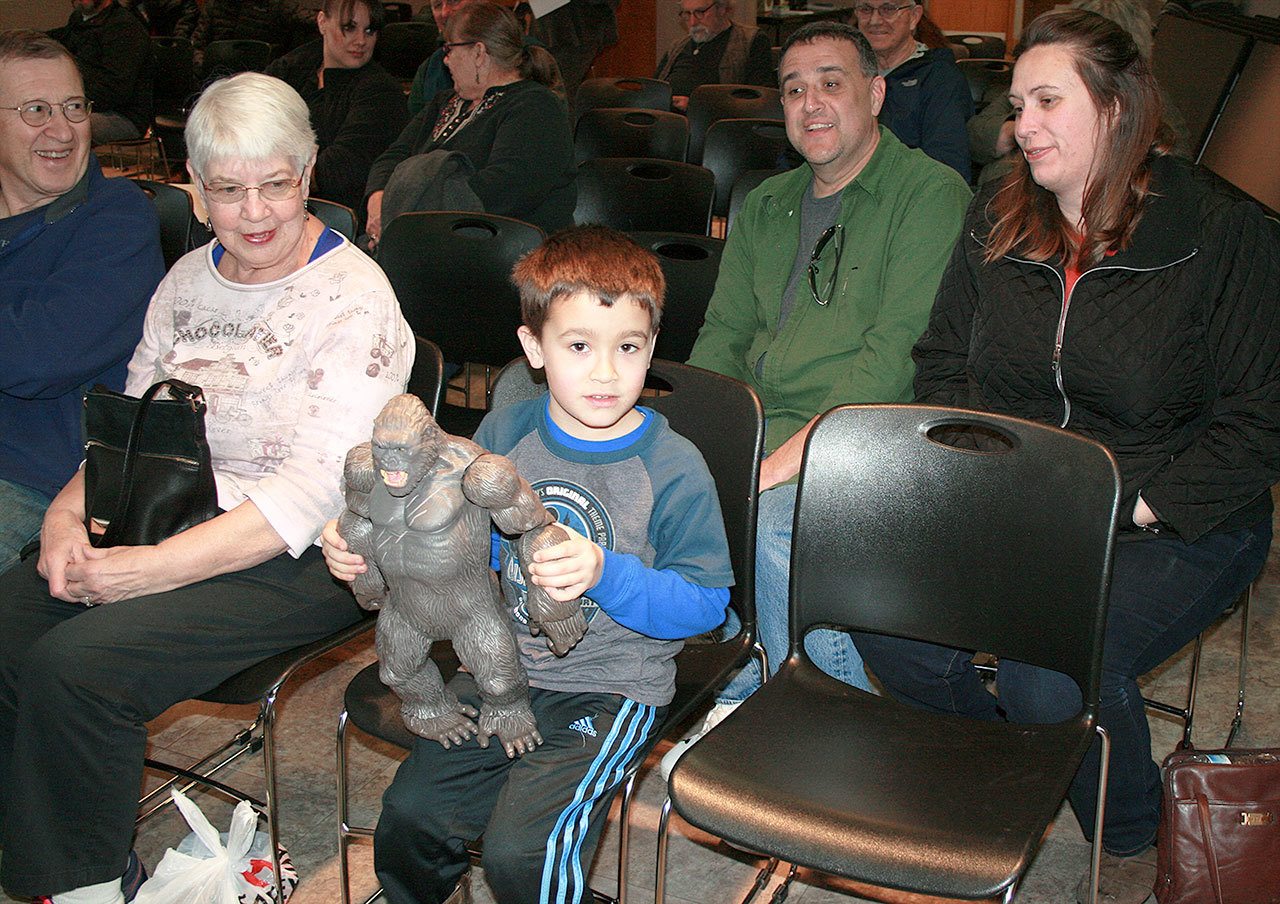“When people ask me if Sasquatch exists, I say, ‘you tell me,’” author David George Gordon said.
And tell they did.
During “Sasquatch: Man-Ape or Myth,” a talk he presented Thursday at Oak Harbor Library, author David George Gordon asked for attendees to share personal stories about Sasquatch.
Anacortes resident Starl Hall said he and his family ran into the “skunk-ape,” southern nomenclature for Sasquatch, while driving through a storm in the Ozarks.
“We were going to scout out a river for canoeing, and we had to go slow because you couldn’t pull off. There were many real sheets of heavy rain and limbs blowing across the road — it was a violent thunderstorm.
“We made a dog-leg turn … and this thing appeared right in front of us, but when he ran across the road he raised his arm because he had to jump down. But his strides; he was moving faster than anything,” Hall said.
Hall said he couldn’t believe his eyes at first.
“I said, ‘did anyone else see that?’ and my grandson said, ‘yes,’ and my wife said, ‘was that an elk?’
“It absolutely was not an elk,” Hall said.
He may have just gotten a glimpse, but Hall said the creature’s form and features stick with him.
“The most striking thing about it was its long flowing red hair, because it threw its arm up as it was running to make this leap,” Hall said. “I mean it literally was a seven-foot drop on the other side of the road and he didn’t try to jump.
“I mean he just ran off of it, almost like a sprinter going to hurdle … It was agile. This thing was eight foot or taller cause it was moving — unbelievable — two steps to cross the road. It only had two legs, and he was very, very athletic.”
Hall said that the encounter convinced him of Sasquatch’s existence, but he rarely tells his story.
“I told people and they laughed at me,” Hall said, adding that if he had been in a different state of mind, he would have attempted to gather more evidence.
“Talk about stopping to look at footprints?” he said. “I was so afraid, I just wanted to get out of there. I mean, it was a reaction. It was bi-pedal and it was moving.”
Gordon said this type of fear-based response is to be expected.
“I’m really fascinated with people’s relationship with animals,” he said. “Not just what we eat, but just how we react and relate to animals. I think we have a lot of really primordial- or herd-like instincts. One of those is if we find something that doesn’t fit into what we believe is part of our cosmology, it really is a shock.”
On the topic of Hall’s “skunk-ape,”named for the creature’s supposed strong odor, Gordon said such stories are his favorite part of the lecture series.
“I love those kinds of stories,” Gordon said. “What I really think is worth noting is there’s no real advantage in telling this story. People are not going to come up to him and say, ‘wow, cool, do you want to be on my TV show,’ or whatever. So they’re actually kind of vulnerable and opening themselves up to all kinds of ridicule.”
Oak Harbor resident James Carlson said he ran across Sasquatch prints on Whidbey Island.
“A lot of people think you have to go to the Cascades area to find tracks” Carlson said. “But, I can tell you, you can find tracks on these islands. I’m not going to give up my location, either. I got a nice set of tracks. They’re not bear tracks.”
With all the sightings, Gordon said he hopes people begin to engage in citizen science: recording their encounters, taking photos of the evidence, taking standardized notes with measurements and ensuring the safe transfer of ownership with regard to any obtained evidence for testing.
“I don’t know if we are capable of bringing in the evidence to lay that to rest,” he said. “People are always like, ‘we need a body.’ Probably what we really need are good observations.”
n Oak Harbor Library teamed up with Humanities Washington to bring this event to the community. Visit www.humanities.org or www.sno-isle.org



